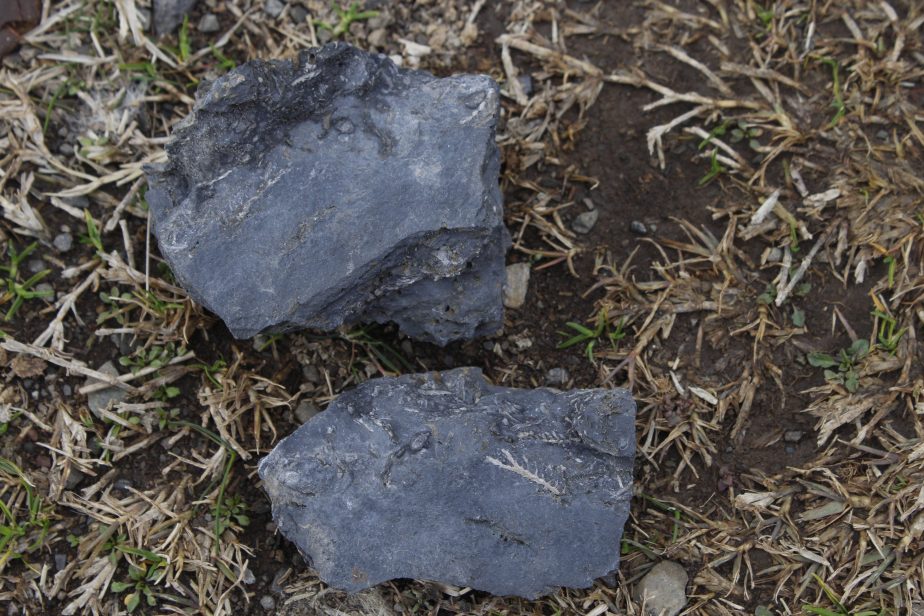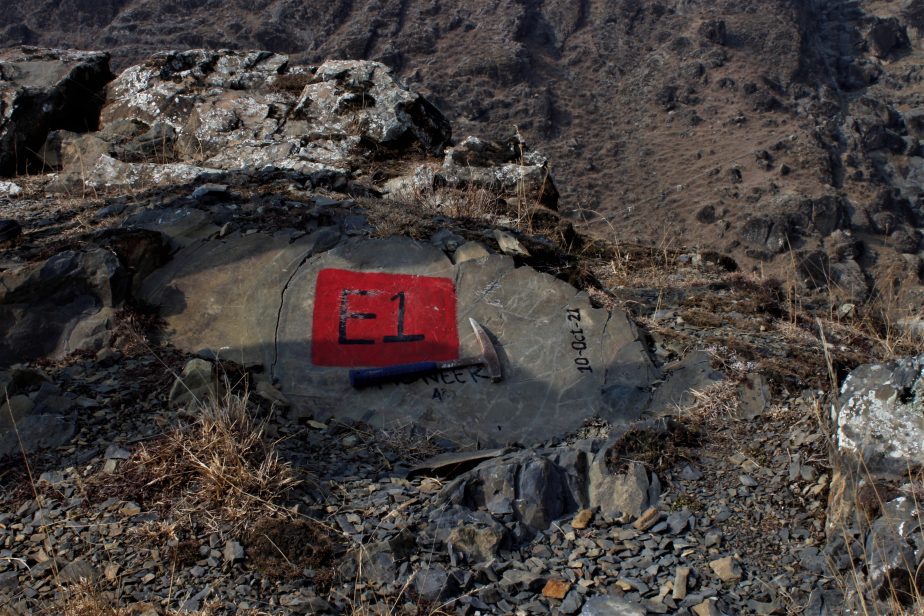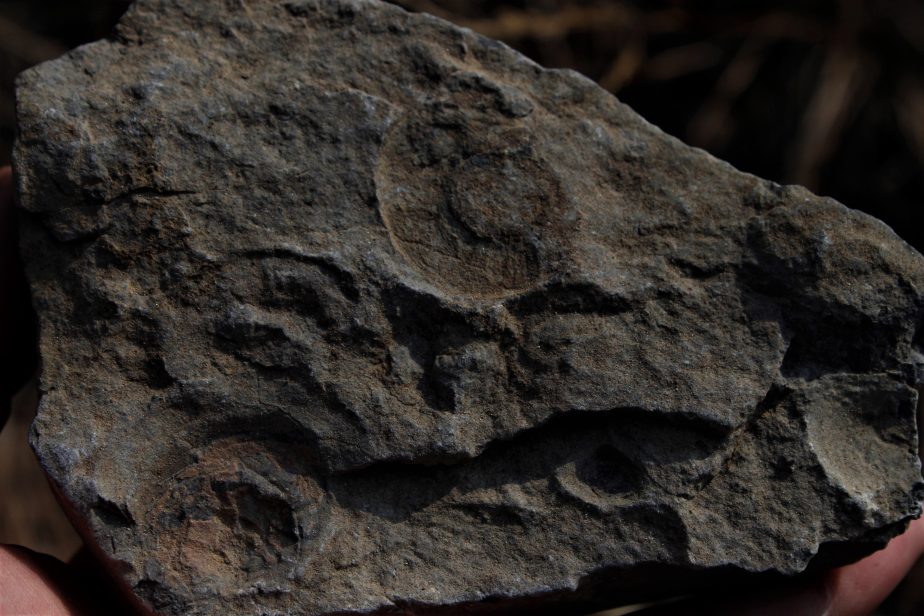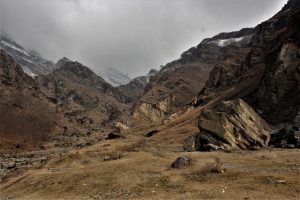Nazir Bhat grew up hearing stories of foreigners riding on horseback in his hometown, known for its fine Himalayan horses. Back in those colonial times, Guryul was just another sleepy hamlet in the southern part of Srinagar, where natives mainly practiced farming. But when the word about those foreigners finally got out, Nazir’s grandfather understood that his hometown has become a global excavation site.
Guryul, it turned out, contains a wealth of fossils, dating back over 250 million years – and containing perhaps the world’s best record of the “mother of extinctions.”
Despite that disclosure putting Guryul on the world map, the foreign footfall is less common today due to the political turmoil in Kashmir. The region has been disputed between India and Pakistan since 1948. Three subsequent Indo-Pak wars and protracted political uncertainty have overshadowed any sense of normalcy in Nazir’s homeland, where efforts are afoot to make the erstwhile “horse hamlet” into a global heritage site.
“We would hear the stories of the presence of fossils in the site from our ancestors and were very fascinated to know how we house such a heritage of global importance,” Nazir, a spirited man in his late 50s, says. “All these years as the government failed to protect the site, we made sure to safeguard our heritage.”
Against the backdrop of this proactive community spirit, prehistoric times are resurfacing as a present-day spectacle in the foothills of the Kashmir Himalayas. A troupe of fact-finders is already making rounds of the site housing evidence of the world’s “first tsunami” in a frozen state.

The fossil rocks of Guryul Ravine have made it an exploration destination for experts since 1859. Photo by Umer Ahmad for The Diplomat.
Mindful of the significance of this global heritage site, the New Delhi-appointed local administration in Kashmir is trying to open it as a fossil park. But beyond the sightseeing wonder, the legend of the Guryul Ravine is lost in the growing mist of Kashmir’s “development story.”
At the heart of this “development story” in the region, where New Delhi took direct control with a constitutional coup in August 2019, is the free run given to cement factories, which are turning the entire belt into a dust bowl.
“Nine cement factories spread over 125 acres of land in the Guryul belt have become pernicious for humans as well as the heritage site,” says Iqbal Ahmad, a social activist. “One lakh [100,000] kilograms of daily toxic fumes from these factories cover everything in a toxic grey fog. Apart from making humans sick, it’s blackening this fossil site.”
This unaddressed concern is diminishing the significance of the site for the authorities who organized the fossil show in October 2021. Months later, the fossil park still awaits official intervention for its bid to become a global heritage site.
“Back in 1950s, foreign tourists would visit the place and take fossil-rich rocks as a souvenir with them,” Nazir recounts. “Those foreigners would indulge in mining practices day in and day out, while our forefathers remained oblivious of its importance.”
On the itinerary of those excavators would be the pre-dinosaur Permian period site, whose history is as mysterious as the Himalayan hills.

Since the 19th century, foreigners have been taking home these fossil-rich rocks following field trips to the Guryul Ravine. Photo by Umer Ahmad for The Diplomat.
“I worked as a geologist in the Guryul belt for 40 long years and I always had an apprehension that these mountains are a bit different than others,” says Abdul Majid Butt, chairman of the Centre for Himalayan Geology. “Back then, during my field trips, I discovered that the fossils which are within that area belong to the Triassic Period.”
There are some ripple marks that stand in evidence of this, the geologist adds. “We eventually received some visitors from Scotland, Ireland, and Britain, who stood in favor of my research. I was called to Penn Dixie [in Erie County, New York], which is the number one fossil site in the U.S. They asked me to highlight the project on global level.
“They involved me in a fossil hunt, which is duly recognized by the Guinness Book of World Records. They confirmed that my fossil hunt [in Guryul Ravine] was of international importance. This is a must for all the geologists round the globe to visit this area.”
The history of these rocks is equally compelling.
Some 252 million years ago, says G.M. Bhat, professor of geology at Jammu University, oceanic life was flourishing before a major catastrophe, during which 95 percent of the marine life vanished.
“This was a major extinction in the history of mankind known as the ‘mother of extinctions’,” Bhat explains. “During that event, 75 percent of the life on land perished as well. All [that] geological history is trapped within the rocks of Guryul Ravine fossil site.”
Bhat says this geological history is glaring at Guryul Ravine site. Rocks with fossil markers are easily visible.

At Guryul Ravine, this rock has been marked as fossil rich by geologists. Photo by Umer Ahmad for The Diplomat.
At the top of the hills sits a serene spring, which is attributed to Kashmir’s patron saint, Sheikh Noor-ud-Din Noorani. It gives a mystic meaning to the geological “origin of life” theory associated with these rocks.
According to Bhat, when the chemical composition of water changed in the oceans at a natural pace globally, it brought about a transitional period followed by a rejuvenating period. Accordingly the marine life started perishing in Guryul, and layer after layer began to deposit on the beds of these rocks.
“This sedimentary deposit continued for 8 million years,” Bhat explains. “This area was present in the Southern Hemisphere of the world [at the time]. Further, due to tectonic activity, plate motion was in process, and this area falls under the Northern zone now. The Indian plate collided with the China plate,” and tectonic upliftment moved the Guryul Ravine site from the bottom of the ocean to the “top of the world” – the Himalayas.
The traces of this catastrophe can be found all over the world, including in Japan, China, Armenia, Iran, and Wales, the professor says.
“The significance of Guryul site is that all the history is trapped within 3-meter thickness of rocks,” Bhat adds. “Such a thick belt of fossil preservation can’t be found anywhere in the world. In China, the fossils are deposited merely in a 27 cm belt.”
To explore these rocks further, a Canadian geologist, Michael Brookfield, tried to initiate research at the local level in Kashmir in 2007, but it didn’t progress. “Since then,” Bhat laments, “a lot of fossils were destroyed and displaced by the mining procedure.”
Back in 2009, when cement factories and quarry mining began to pose an existential threat to the fossil site, Bhat sent a letter to authorities seeking an immediate official intervention to stop the commercial mining. Such an injunction was necessary to salvage what Bhat called the “most potential candidate for Global Boundary Stratotype Section and Point (GSSP) for the Permian-Triassic Boundary.”
Along with Brookfield, Bhat petitioned the Prime Minister of India’s Office regarding the illegal mining in 2012. Subsequently, the local authorities declared a 4-square-kilometer area at the Guryul site a protected area and claimed that mining activities have ceased.
In 2017, a team of expert geologists from the Geology and Mining Department, Srinagar, an expert team from Jammu University, and a team from University College London jointly and thoroughly inspected the Guryul Ravine site. The researchers recommended that the area be declared as a “Zone of Geological Importance” by imposing a complete ban on mining, and made a joint venture to preserve this section.
At the same time, a team of experts demarcated the area and identified its boundaries. After the demarcation survey, a geo-referenced map and plan of the Guryul Ravine was prepared and was thoroughly cross-checked in the field for accuracy. Accordingly, a proposal for preservation of the Guryul Ravine was submitted to the administrative department, which agreed the proposal and subsequently issued an order on April 3, 2017.
“But underhanded mining is still going on,” Bhat says. “Sadly, the fossil section at Guryul has been entirely put to sale.”
If the Guryul section is destroyed, the professor fears, then one of the world’s most important areas preserving evidence of one of the most important changes in the history of life on Earth will no longer be available to future generations for study.

Fossil marks on the rocks at the excavation site. Photo by Umer Ahmad for The Diplomat.
Back in 1859, it was an English geologist, Henry Haversham Godwin-Austen, who first initiated the research process at the Guryul Ravine. Since then, researchers have tried to understand causes of the Permian Mass Extinction and to document the preserved fossil record in these rocks. These fact-finders are also trying to understand the rejuvenation of life forms on earth at that time.
Along with the local researchers, like Bhat, 38, geoscientists from different parts of the globe are currently exploring the Guryul Ravine strata with the aim to make it a Natural Heritage Site.
“Studying these fossils can tell us how life evolved afresh after the extinction,” Bhat says. “While such event is also captured in rocks in Armenia, Pakistan, Arctic Canada, Greenland, Spitsbergen, Tibet, China, Siberia, Iran, and northern Alaska, it is best preserved in the Kashmir sections.”
It is perhaps known only to the scientists that the first-ever recorded tsunami event is well-preserved in these rocks, Bhat adds. “Geologists from all over the world have been visiting this area for furthering their research studies.”
In 1900s, a prominent British geologist, Charles Stewart Middlemiss laid the base map for the Department of Geology and Mining in Kashmir and worked on the Guryul Ravine site.
Likewise, Tsutomu Nakazawa from Geological Survey of Japan, AIST and H. M, Kapoor from the Geological Survey of India further worked on Guryul Ravine and established the concept of the Permian–Triassic (PT) boundary.
As a geological period, the PT boundary is defined through both fauna and lithological characteristics. “Unlike the PT section in remote belts of China and Japan, the one at Guryul Ravine is easily approachable and thus has gained the attraction of the world’s geoscientists,” said Mohsin Noor, a mineral officer in Kashmir.
“The PT sequence developed in Guryul Ravine helps us understand how the depositions of Tethys Sea took place in a chronological order.”
The global importance and interest in these fossil rocks has activated a local campaign as well. The face of this grassroots movement to save Guryul is Nadeem Qadri, a well-known environmental advocate in the region.
“I tried my level best to highlight this at international forum and to make the government department stakeholder,” Qadri says. “The site was under political disturbance for long. There were lot of stakeholders, allowing the industries to continue mining behind the curtains for derivation of limestone and other material. I’m happy we could take those elements head-on for the sake of this global heritage site.”
Apart from building a local support group, the Guryul Ravine has motivated officials to go for further in excavation in Kashmir.
“The Archaeology Department has discovered seven more similar sites in Kashmir where the probability of presence of fossils is high,” said Mushtaq Beigh, assistant director at the Department of Archeology for the government of Jammu and Kashmir.
Amid this resolve, Nazir Bhat talks about the legend of the Guryul Ravine with a sense of mystic belief governing life in the region.
“This part of Himalaya surely houses some secrets,” he says. “Whenever you visit here, you tend to feel [the] strange meaning of life. No wonder a battery of researchers are now trying to understand the evolution of the same life that once existed on the planet and now [is] lying buried in these rocks here.”

































